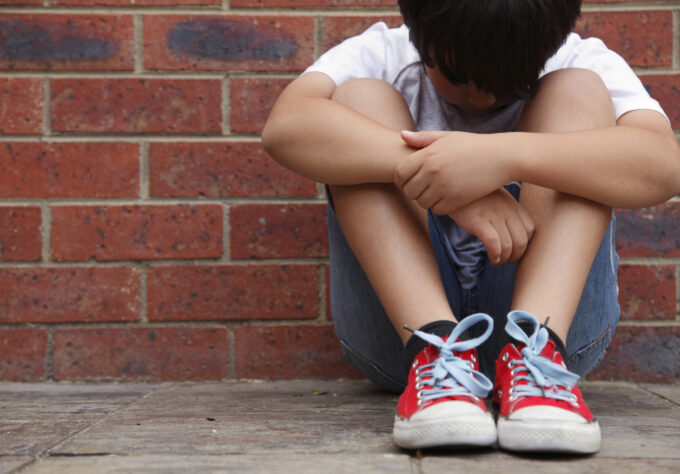This post was originally published in the Wilmington News Journal and DelawareOnline.
Suicide. It’s a troubling topic, a hugely difficult conversation, a “that could never happen to my child” pronouncement. But with the Centers for Disease Control and Prevention (CDC) recently announcing that suicide rates in the U.S. are steadily on the rise, the time is now to confront this issue with your family — especially with your preteens and teenagers.
The CDC reports that from 1999 through 2014, suicide rates have increased for both males and females and for all ages 10–74. While this is concerning news, perhaps most troubling is the fact that the suicide rate among girls aged 10–14 tripled during this time frame and had the largest percent increase (200 percent). And although suicide is relatively rare among children, it is the third leading cause of death in youth ages 10–24, after accidents and homicide.
Who’s at Risk?
Do you remember what it was like to be a teenager? The pressure to fit in socially, to perform academically, and to act responsibly…it can be quite easy for some kids, but for others that gray area between childhood and adulthood can seem like a difficult hole to crawl out of! Adolescence is also a time of relationships, sexual identity and a growing desire to be independent that often conflicts with the rules and expectations set by parents, teachers and other adults.
The National Institute of Mental Health (NAMI) reports that 1 in 5 children ages 13–18 have, or will have, a serious mental illness. Mental health problems — such as anxiety, depression, bipolar disorder or insomnia as well as drug and alcohol abuse — can put young people at a higher risk for suicidal thoughts. Teens going through major life changes (parents’ divorce, moving, a parent leaving home due to military service or parental separation, financial changes) and those who are victims of bullying are at greater risk of suicidal thoughts. Other risk factors can include:
- feelings of distress, irritability or agitation
- feelings of hopelessness and worthlessness that often accompany depression
- a previous suicide attempt
- a family history of depression or suicide
- emotional, physical or sexual abuse
- lack of a support network, poor relationships with parents or peers, and feelings of social isolation
- dealing with bisexuality or homosexuality in an unsupportive family or community or hostile school environment
What Are the Warning Signs?
Suicide among teens often happens after a stressful life event, such as problems at school, a breakup with a boyfriend or girlfriend, the death of a loved one, a divorce or a major family conflict. Girls think about and attempt suicide about twice as often as boys, and tend to attempt suicide by overdosing on drugs. But boys die by suicide about four times as often girls, perhaps because they tend to use more lethal methods, such as firearms. This is why it’s important to keep track of all medications in your home. And if you keep a gun in your home, it should be unloaded, locked and kept out of the reach of children and teens, at all times.
According to NAMI, warning signs of mental illness and/or thoughts of suicide can include:
- feeling very sad or withdrawn for more than two weeks (for example, crying regularly, feeling fatigued, feeling unmotivated)
- trying to harm oneself or making plans to do so
- out-of-control, risk-taking behaviors that can cause harm to self or others
- sudden overwhelming fear for no reason, sometimes with a racing heart, physical discomfort or fast breathing
- not eating, throwing up, or using laxatives to lose weight; significant weight loss or gain
- severe mood swings that cause problems in relationships
- repeated use of drugs or alcohol
- drastic changes in behavior, personality or sleeping habits (such as waking up early and acting agitated)
- extreme difficulty in concentrating or staying still that can lead to failure in school
- intense worries or fears that get in the way of daily activities like hanging out with friends or going to classes
What Can We Do?
It’s easy to blow off some of these warning signs as “teen angst” or “just a phase.” And while that is a possibility, it’s important to understand that if teens feel ignored when they are seeking attention, it could increase the chance of them harming themselves (or worse). Keep a close eye on a teen who seems depressed and withdrawn. Always keep the lines of communication open and express your concern, support and love. If your teen does confide in you, show that you take those concerns seriously. If you suspect your child isn’t comfortable talking to you, suggest another family member, a clergy member, your school’s guidance counselor or your family doctor. You can also ask your family doctor for a referral for a mental health specialist.
If you learn that your child is thinking about suicide, call your child’s doctor or therapist right away. If your child is in crisis, you can call (800) SUICIDE, or get to an Emergency Department.
Finally, don’t be afraid to ask questions. You won’t “plant the seed of suicide” by asking if they’ve had thoughts of ending their life or hurting themselves. In fact, it might be just the prompt a teen needs to feel like someone cares and wants to listen. Of course, it’s hard to ask. Maybe they won’t answer you, but maybe — just maybe — they will.
Learn More:
About Teen Suicide (Nemours’ KidsHealth)
Suicide — for Teens (Nemours’ KidsHealth)
Suicide Prevention (CDC)



